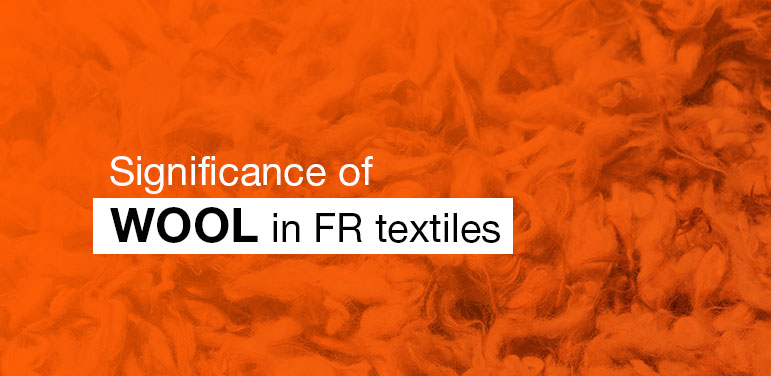Flame retardant fabrics are essential to reduce the potential risk of fire accidents. Manmade materials have dominated the flame-resistant textile market in recent years while wool-based fire-retardant fabrics have been used for centuries due to their natural properties and effectiveness in protection against flames. Due to FR properties, other than clothing, it finds widespread usage in rugs, blankets, insulation, upholstery, and airplane interiors.
Within the arena of natural fibers, wool has the highest inherent non-flammability, high thermal insulation, and moisture-wicking capabilities. It does not ignite easily, burns with a self-extinguishing flame, and forms a soft dissipating ash residue.
What Makes Wool Stand Out?
Wool is a superstar among natural fibers when it comes to fire safety. It’s naturally resistant to flames, thanks to its high ignition temperature and a neat trick where it burns with a self-extinguishing flame, leaving behind a soft ash residue. This makes it safer than materials like cotton and rayon, which ignite more easily and release more heat when they burn.
Wool’s secret weapon is its Limiting Oxygen Index (LOI), which measures a material’s flammability. Wool boasts a higher LOI compared to cotton and rayon, meaning it needs more oxygen to keep burning. Plus, wool fibers won’t melt or drip like synthetic fibers, which can stick to your skin and cause more harm.
Mix and Match: Wool Blends for Extra Protection
Wool can be blended with various flame-resistant fibers like m-aramid, p-aramid, Modacrylic, and FR viscose to improve the fire-retardant performance and also wool or wool blends can be treated with FR chemicals to improve protection against fire. The ability to blend wool with flame-resistant fibers has increased its end-use applications for protective garments designed for the molten metal industry, transportation, and military requirements.
Wool: The Sustainable Superhero
Wool has been widely acknowledged as an environmentally friendly fiber option with several benefits, such as being 100% natural, renewable, biodegradable, and recyclable so it does not contribute to microplastic pollution in our oceans or on land. Wool uses 18% less energy than polyester and nearly 70% less water than cotton to produce 100 sweaters and has a smaller carbon footprint than other textile fibers.
In conclusion, wool-based fire retardant fabrics offer a sustainable and effective solution to mitigating fire hazards. Its natural properties make it an ideal choice for textiles used in high-risk environments. By incorporating wool fabrics into fire safety strategies, fire risks can be significantly reduced, resulting in a safer and more secure environment.


Leave a Reply